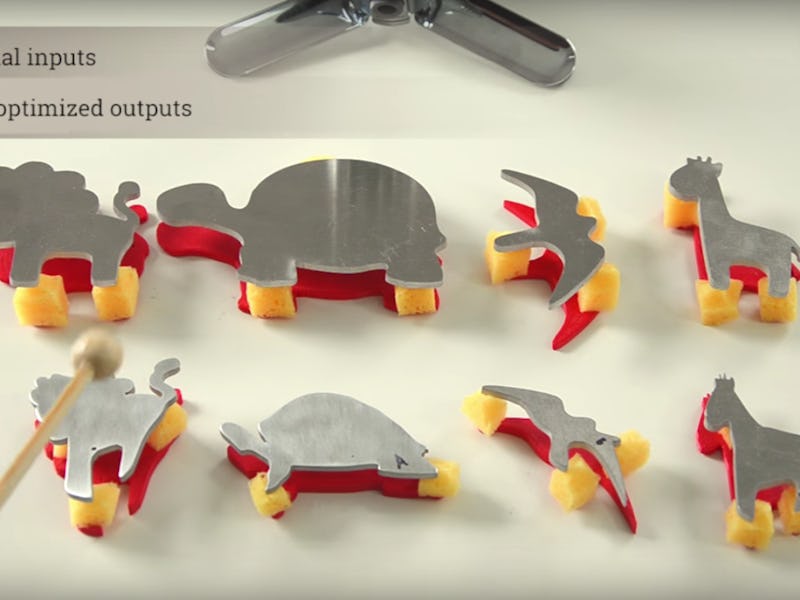A Computer Scientist Is Building the Musical Instruments of the Future
Grab your headphones and listen to the sweet, sweet sounds of technological innovation.

Changxi Zheng wasn’t a huge fan of music growing up. “When I was a child I was forced by my parents to learn violin,” he tells Inverse. But those music lessons stuck with him, and today Zheng’s work in computer science is contributing to a more beautiful-sounding world.
Zheng, an assistant professor at Columbia University, is using computational design to build better looking and better sounding musical instruments. He led a team of researchers that built a “zoolophone,” a sort of xylophone where each striking bar is shaped like a different animal. Their work is to be presented at SIGGRAPH Asia in Japan next week.
Normally, building instruments that hit the right note involves a painstaking process of manual trial and error. This is why glockenspiel keys usually stick to a generic bar shape — even then, a professional tuner has to adjust each one by carving out dimples from the bottom until it vibrates at the proper frequency.
Traditional glockenspiel bars have to be individually tuned by hand.
But Zheng’s process skips all of this by using a computer model to calculate the vibration that a given shape would make when struck with a mallet. The computer can complete the trial-and-error process a thousand times over to come up with an optimized design.
So the researchers tell the computer, for example, to find a shape that sounds a G note, starting from the outline of the shape of a lion. The computer then tests the vibrational properties of that shape, modifies it slightly and tests again. With each test it attempts to get closer to the desired acoustical outcome, until it gets close enough.
The team uses both 3D printing and digital water-jet milling to fabricate the output shapes. The computer can even be used to optimize the stand for each piece, showing where the supports should contact the striking surface for it to sound the best.
If your mind is not yet sufficiently blown, get this: The research team used the computer to design metallophones that sound three different notes, or a full chord, with a single hit of a mallet. What is this wizardry?
Beyond the potential for this process to make an infinite variety of musical instruments that look and sound good, it could also revolutionize our acoustic worlds in other ways.
“Essentially what we are doing here, at the very fundamental level, is to control the vibration of the object,” says Zheng. So imagine — computer fans and wind turbines designed so they make less noise, or noise at a frequency that we can’t hear or is less annoying.
There are other significant engineering implications, at big and small scales. Computing the vibrational properties of a bridge, for example, could be used to come up with a design that better withstands earthquakes, Zheng explains.
On the small scale, micro-electromechanical systems (tiny machines) can be very sensitive to vibrations, and this process could optimize them so they are resilient enough for tasks at hand.